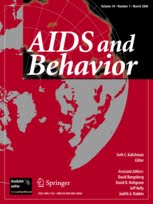Posted on May 28, 2021

Past-Year Violence Victimization is Associated with Viral Load Failure Among HIV-Positive Adolescents and Young Adults
Summary: Zambian youth living with HIV who have experienced certain forms of violence are more likely to have treatment failure. These findings highlight that addressing youth’s experiences of violence—especially psychological abuse—may be critical to achieving global HIV targets.
Abstract: "We examined the relationship between past-year violence victimization and viral load (VL) failure among consecutively-sampled male and female adolescents and young adults, aged 15–24, in four HIV clinics in Ndola, Zambia. Measures of past-year physical violence, psychological abuse, and forced sex were adapted from the ICAST-C and WHO Multi-Country Study. Using logistic regression, we derived associations between VL failure (≥ 1000 copies/mL) and: any victimization; cumulative victimization; and types and perpetrators of violence. Among 272 youth (59.2% female, 72.8% perinatally infected), 73.5% (n = 200) experienced past-year violence and 36.8% (n = 100) had VL failure. Higher odds of VL failure were observed for participants who reported high frequency of any violence versus no violence victimization (adjusted OR, aOR: 3.58; 95% CI 1.14–11.27), high frequency of psychological abuse versus no psychological abuse (aOR: 3.32; 95% CI 1.26–8.70), any versus no violence from a family member other than a parent/caregiver for physical violence (aOR: 2.18, 95% CI 1.05–4.54) and psychological abuse (aOR: 2.50; 95% CI 1.37–4.54), and any versus no physical violence from a friend/peer (aOR: 2.14, 95% CI 1.05–4.36). Past-year violence victimization was associated with VL failure when considering the frequency, type, and perpetrator of violence. Programs addressing violence among youth living with HIV may be critical to improving viral suppression and preventing onward transmission."